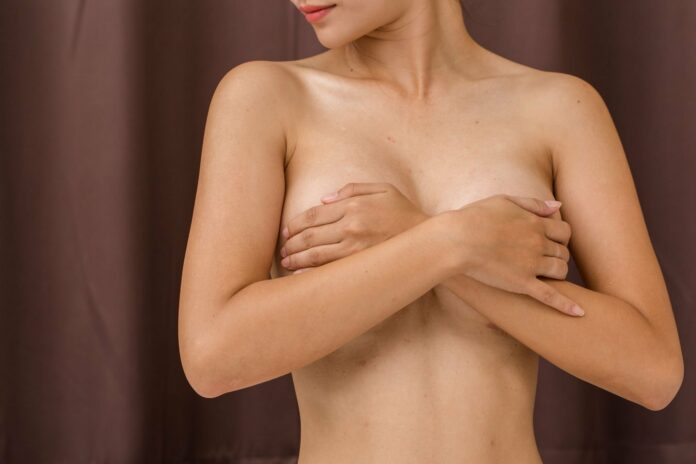Every year in the UK, over 50,000 women – one in seven of the adult population – receive a diagnosis of breast cancer, and the number is rising. Taking all possible steps to safeguarding breast health has never been more important. While mammograms are a useful tool for detecting cancer, they have their limitations. This is where ThermoCheck® thermography comes in as a key complementary screening method, offering a fuller picture of breast health and giving you a tool for early detection and intervention.
Understanding mammography
A mammogram uses low-energy X-rays to create detailed images of the breast tissue and detect any structural abnormalities. During the procedure, the breast is compressed between two plates to spread out the tissue and obtain clear X-ray images from different angles.
NHS England has recently launched a campaign encouraging women to attend their breast health screenings. Mammography has been the cornerstone of breast cancer screening in the UK since the NHS Breast Screening Programme’s inception in 1988. This programme offers free mammograms every three years to women aged 50 to 71.
Mammography, however, has its limitations. One third of mammograms give false positive readings and each mammogram increases a pre-menopausal woman’s cancer risk by 1% due to the ionising radiation exposure. This is why I recommend that ThermoCheck® thermography is used as an adjunctive tool to mammograms resulting in women having greater and more regular control over their breast health.
What is ThermoCheck® thermography?
ThermoCheck® breast thermography is a non-invasive, radiation-free test that uses infrared imaging to detect heat patterns and blood flow in breast tissue.
Unlike mammograms, which detect structural changes from a certain size, thermography identifies temperature changes in breast tissue, offering an additional layer of insight and the ability to see abnormalities, that may represent pre-cancerous change, earlier than a mammogram. I believe that ThermoCheck® thermography is a proactive screening method to track changes over time, helping to identify areas of concern long before they may appear on a mammogram and a tool that gives us an opportunity to change that woman’s future risk
The benefits of ThermoCheck® thermography
While ThermoCheck® thermography is not a replacement for mammograms, it can be a powerful complementary tool. Here’s how:
- Early detection of a breast at risk: Studies have shown that thermography sensitivity is upwards of 90% and heat changes can occur between six and ten years before any structural changes are big enough to see on a mammogram. As a result, a thermogram can be an essential tool for early detection, allowing for prompt intervention. Furthermore, studies show that a persistently abnormal thermogram carries a significant 40% increased risk of a cancer developing over five years.
- Radiation-free: Since thermography doesn’t involve radiation, it’s a safer option for women who need more frequent monitoring.
- Suitable for women with breast implants, dense or sensitive breasts: Mammograms can sometimes distort images due to the presence of an implant whereas a thermogram gives a clearer view of potential abnormalities in the breast tissue, especially around the implant area. Dense tissue and tumours also both appear white on mammograms which can affect the interpretation of results.
- Tracking changes over time: Thermography can be repeated as often as is needed as there is no exposure to harmful radiation. This allows for ongoing monitoring of your breast health, as the heat patterns in your breast tissue can be compared year to year. This provides a more thorough understanding and a much more proactive approach to breast health.
In the fight against breast cancer, early detection is everything. If we can determine if a woman is at risk early on then this allows for earlier intervention and reduction of risk. I have shown from my work with ThermoCheck® over the years that correcting certain nutritional imbalances can help to normalise abnormal thermograms over a six month period, making it an effective way to reduce future risk to compromised breast health.
A tool for comprehensive breast care
Should your thermogram come back as abnormal but there is no physical change in the breast, I will look at your lifestyle and what breast health nutrients you may be lacking. You will be given specific nutrients in a concentrated form over the following six months and in my experience, around 80% – 90% of the time the thermogram will return to normal over six months. This shows the importance of keeping up with your breast health and how ThermoCheck® thermography is not only a useful tool in detecting breast cancer, but also in identifying future risk and staying on top of your breast health.
Staying informed and taking a proactive approach to breast health can make all the difference. Here at The Natural Doctor, prevention is at the heart of what we do and ThermoCheck® thermography is a key step in staying on top of your screenings. To find out more about Thermocheck® breast thermography and take control of your breast health, contact the Natural Doctor today.
References
- Breast Cancer Now. “Breast Cancer Facts and Statistics”. https://breastcancernow.org/about-us/why-we-do-it/breast-cancer-facts-and-statistics/#:~:text=develop%20breast%20cancer%3F-,Breast%20cancer%20is%20the%20most%20common%20cancer%20in%20the%20UK,are%20diagnosed%20with%20breast%20cancer.
- Elmore, J. G., Barton, M. B., Moceri, V. M., Polk, S., Arena, P. J., & Fletcher, S. W. (1998). Ten-year risk of false positive screening mammograms and clinical breast examinations. New England Journal of Medicine, 338(16), 1089-1096.
- Goñi-Arana, A., Pérez-Martín, J., & Díez, F. J. (2024). Breast thermography: a systematic review and meta-analysis. Systematic reviews, 13(1), 295.
- Lawson, R. (1956). Implications of surface temperatures in the diagnosis of breast cancer. Canadian Medical Association Journal, 75(4), 309.
- NHS England (2025). “NHS England launches first advertising drive to boost breast cancer screenings”. https://www.england.nhs.uk/2025/02/nhs-launches-first-ever-breast-screening-campaign-to-help-detect-thousands-of-cancers-earlier/#:~:text=The%20campaign%20%E2%80%93%20supported%20by%20leading,who%20get%20the%20all%2Dclear.
- NHS website. “Breast screening (mammogram). https://www.nhs.uk/conditions/breast-screening-mammogram/
- Spitalier, H., Giraud, D., et al (1982). Does breast thermography truly have a role in present-day breast cancer management? Biomedical Thermology, 269-278.




